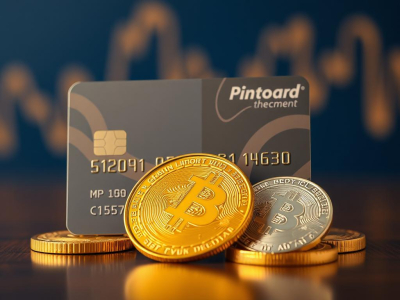
Choose a reliable wallet that supports multiple cryptocurrencies and ensures the security of your assets. Popular options include hardware wallets like Ledger or Trezor, which provide an extra layer of protection against online threats. This choice is crucial in maintaining the balance of your digital portfolio.
Once you've selected a wallet, follow the setup instructions carefully. Create a strong password and enable two-factor authentication for added security. Store your recovery phrase in a safe place, as this will be essential for regaining access to your wallet in case of loss or theft.
After setting up your wallet, familiarize yourself with its features. Understand how to execute transactions, send and receive cryptocurrency, and monitor your balance. Connecting your wallet to reputable exchanges can streamline the buying and selling process, ensuring efficient management of your digital assets.
Regularly update your wallet software to protect against vulnerabilities and exploits. By maintaining these practices, you can enjoy smooth transactions while keeping your cryptocurrency secure.
Choose the Right Wallet Type
Select a wallet that aligns with your cryptocurrency usage. Hardware wallets offer robust security for long-term asset storage, making them ideal for investors holding significant balances. They keep private keys offline, reducing exposure to online threats.
For frequent transactions, consider a software wallet. Mobile or desktop wallets provide quick access and facilitate daily exchanges without compromising security. Ensure you choose a reputable provider with strong encryption practices.
If you prioritize convenience, web wallets allow easy access from any device. However, they may expose you to higher risks; therefore, use them judiciously for smaller amounts or less critical transactions.
Evaluate the compatibility of the wallet with various cryptocurrencies. Some wallets support multiple assets while others focus on specific coins. This can affect your ability to exchange or manage diverse portfolios effectively.
Always assess the backup and recovery options available within each wallet type. A reliable setup should enable you to restore access if needed without losing your assets.
Ultimately, balance security and usability based on how you plan to engage with cryptocurrency. A thoughtful selection will enhance your overall experience in managing digital transactions smoothly.
Download and Install Software
Select a reliable cryptocurrency wallet that meets your needs. Follow these steps to download and install the software:
- Visit the official website: Ensure you are on the official site of the wallet provider to avoid phishing scams.
- Choose your platform: Select the appropriate version for your operating system (Windows, macOS, Linux, or mobile).
- Download the installer: Click on the download link and save the file to your device.
- Verify integrity: Check the hash of the downloaded file against the one provided on the website to ensure it hasn’t been tampered with.
- Install the software: Run the installer and follow on-screen instructions. Choose a secure location for installation.
After installation:
- Create a new wallet: Follow prompts to set up a new wallet, which will generate your digital address.
- Backup your wallet: Store recovery phrases in a secure location; this ensures access to your balance in case of device loss.
- Enable security features: Activate two-factor authentication and other available security measures for added protection against unauthorized transactions.
Regularly update your wallet software to benefit from enhanced security features and bug fixes. This practice is crucial for maintaining secure cryptocurrency transactions.
Create a Strong Password
Create a password that is at least 12 characters long, combining uppercase letters, lowercase letters, numbers, and special symbols. Avoid using easily guessable information such as birthdays or common words.
Utilize a passphrase composed of random words or phrases to enhance security. For example, “BlueSky!Jazz8Train” is stronger than “password123.” This method aids in memorization while maintaining complexity.
Consider using a reputable password manager to generate and store your passwords securely. This allows for unique passwords across different platforms without the burden of remembering each one.
Regularly update your wallet password to mitigate risks associated with potential breaches. Implement two-factor authentication (2FA) whenever possible for an additional layer of protection during transactions.
Monitor your cryptocurrency balance frequently and be cautious of phishing attempts. Always verify the authenticity of websites before entering your wallet credentials.
Backup Your Wallet Securely
Regularly back up your wallet to prevent loss of access to your cryptocurrency assets. Use a hardware device or a secure cloud service for backups, ensuring they are encrypted and protected with strong passwords. Store multiple copies in different physical locations to mitigate risks of theft or damage.
Create a backup file of your wallet's private keys or recovery phrases. This file should be stored offline, ideally on an external USB drive that is not constantly connected to the internet. Avoid using easily accessible storage options such as email or unencrypted cloud services.
Consider the following methods for securing backups:
Regularly test your backup method by restoring from it to confirm you can access your wallet and check the balance of your assets. This practice ensures you are prepared for potential issues without losing track of transactions or funds.
Understand Transaction Fees
Transaction fees can significantly impact your cryptocurrency experience. These fees vary based on network congestion, the cryptocurrency used, and the wallet's settings. Always check current fee estimates before initiating transactions to ensure you maintain an optimal balance of speed and cost.
For example, during peak times, fees for Bitcoin transactions can soar. Utilize tools like blockchain explorers or fee estimators to gauge real-time costs. Consider setting a higher fee for faster processing if timing is critical for your transaction.
Some wallets allow you to adjust fees manually. If you're willing to wait, opting for lower fees can save assets over time. Always factor these costs into your budgeting when trading or transferring cryptocurrencies across exchanges.
Keep in mind that certain wallet types may have built-in mechanisms that help manage these fees automatically, optimizing your transactions without additional input. Understanding how these factors interplay will enhance your ability to access and manage digital assets effectively.


You can be the first!